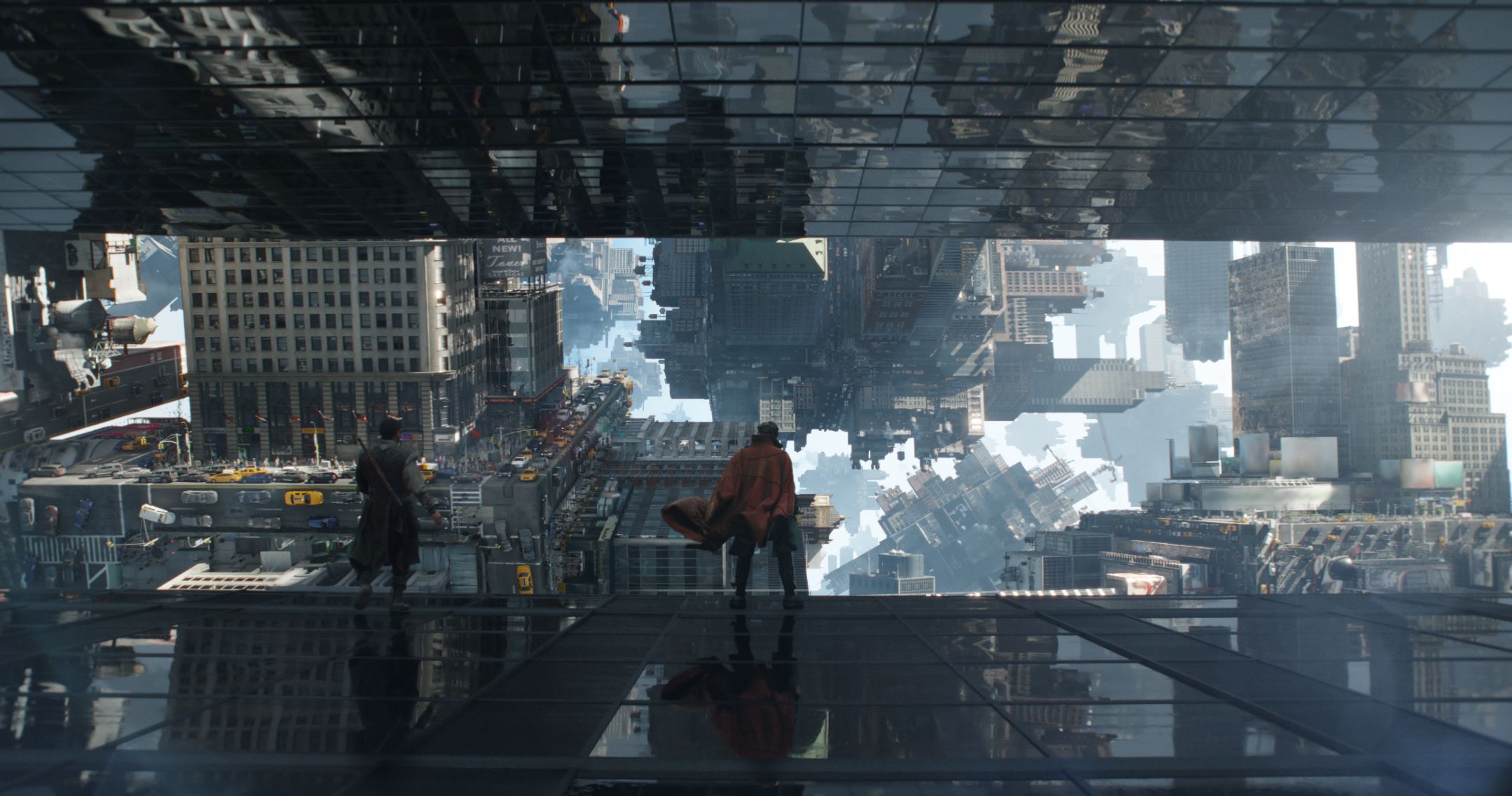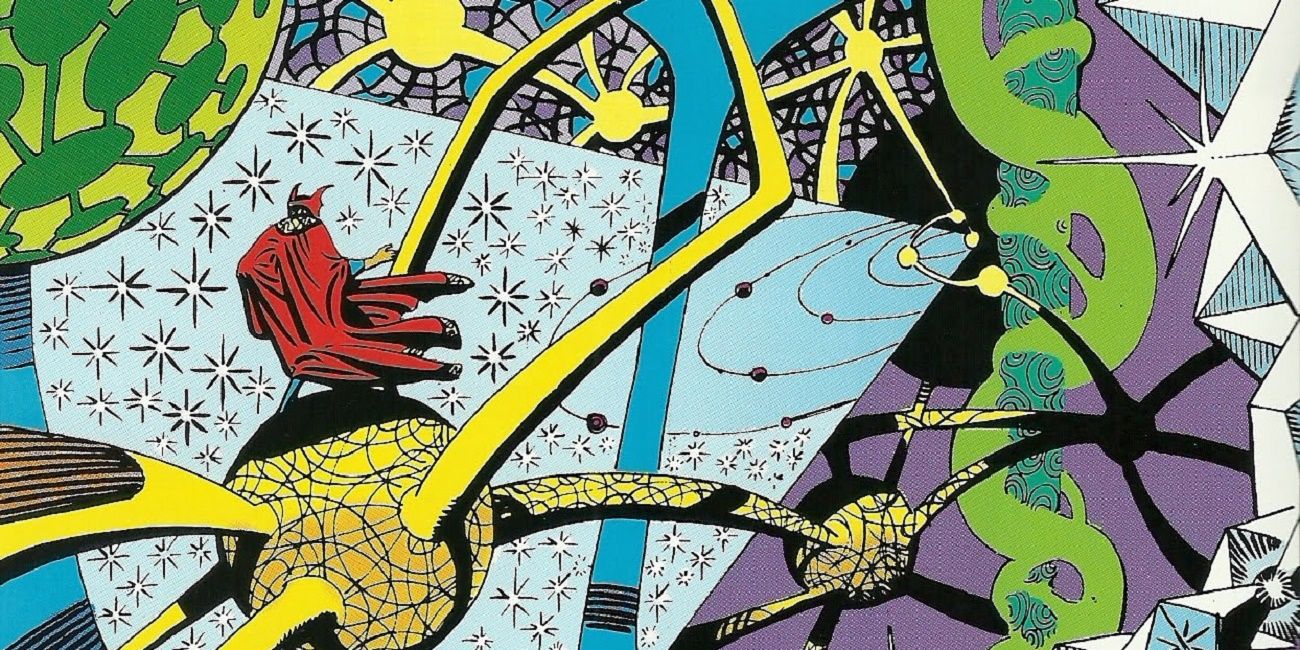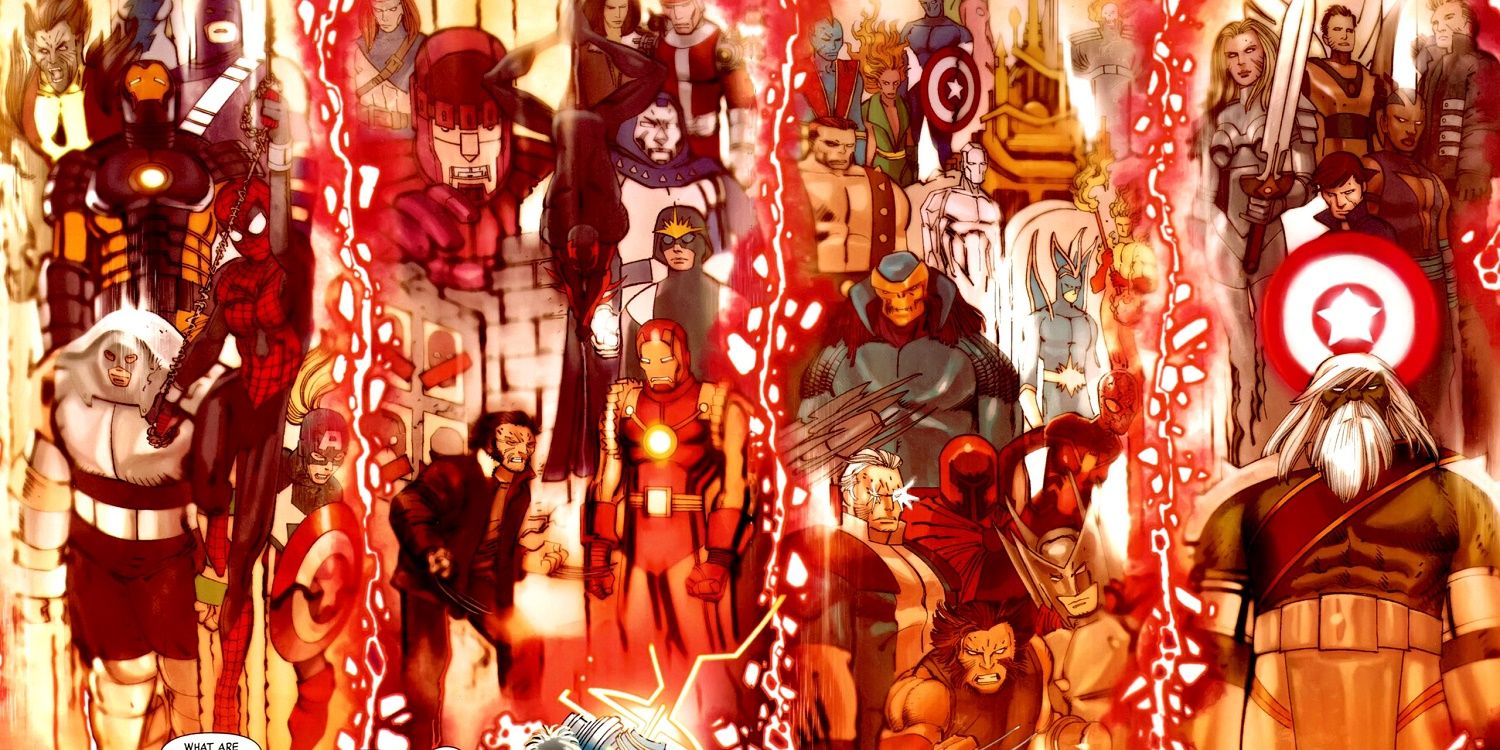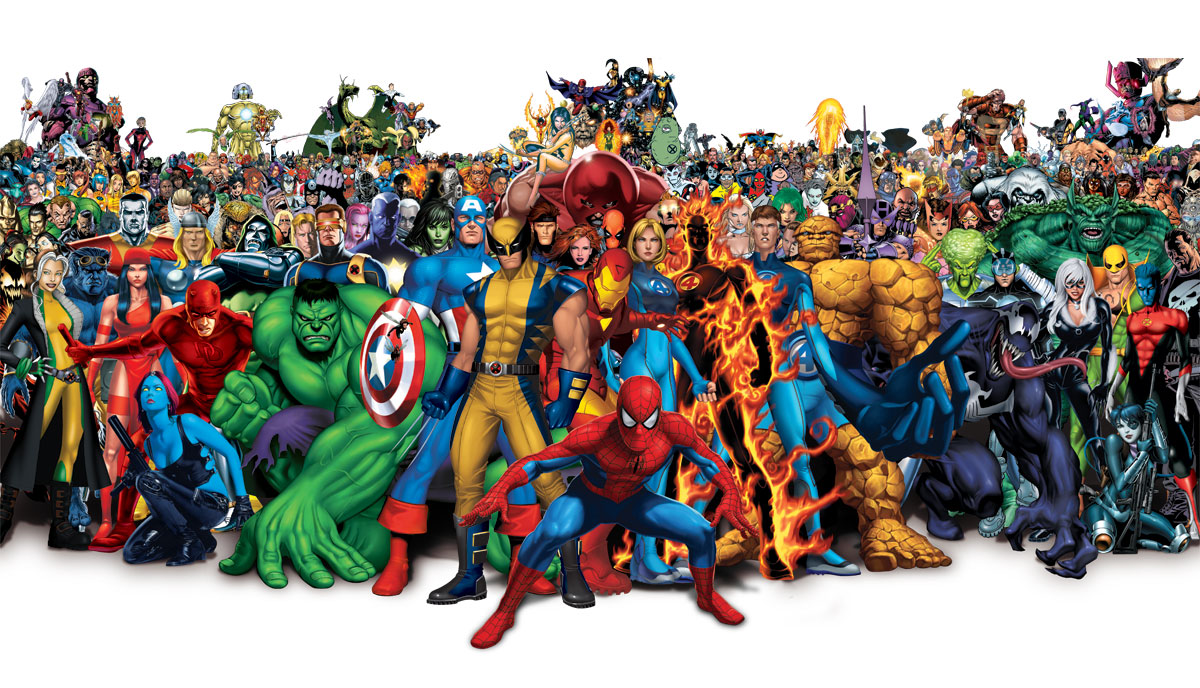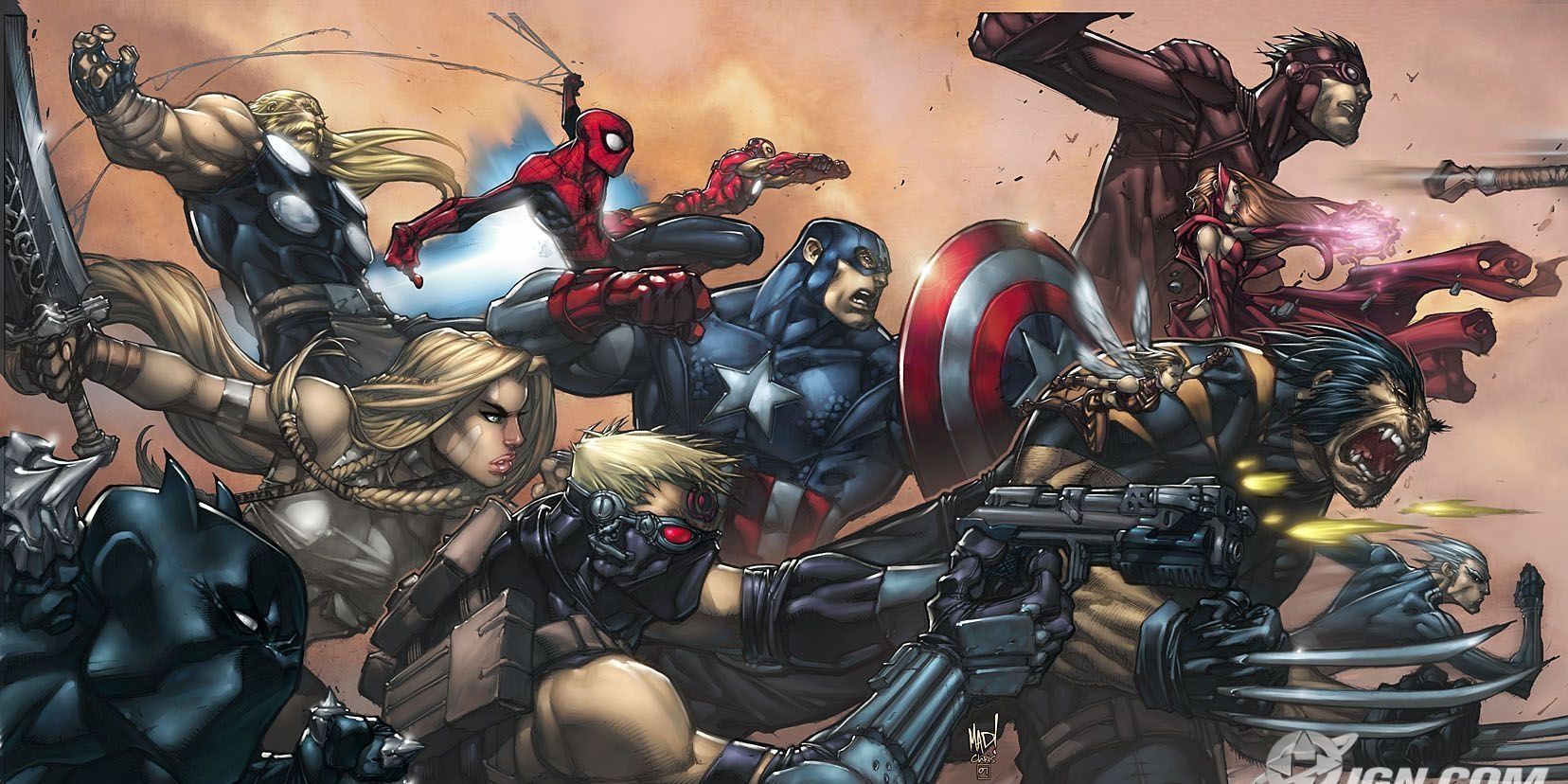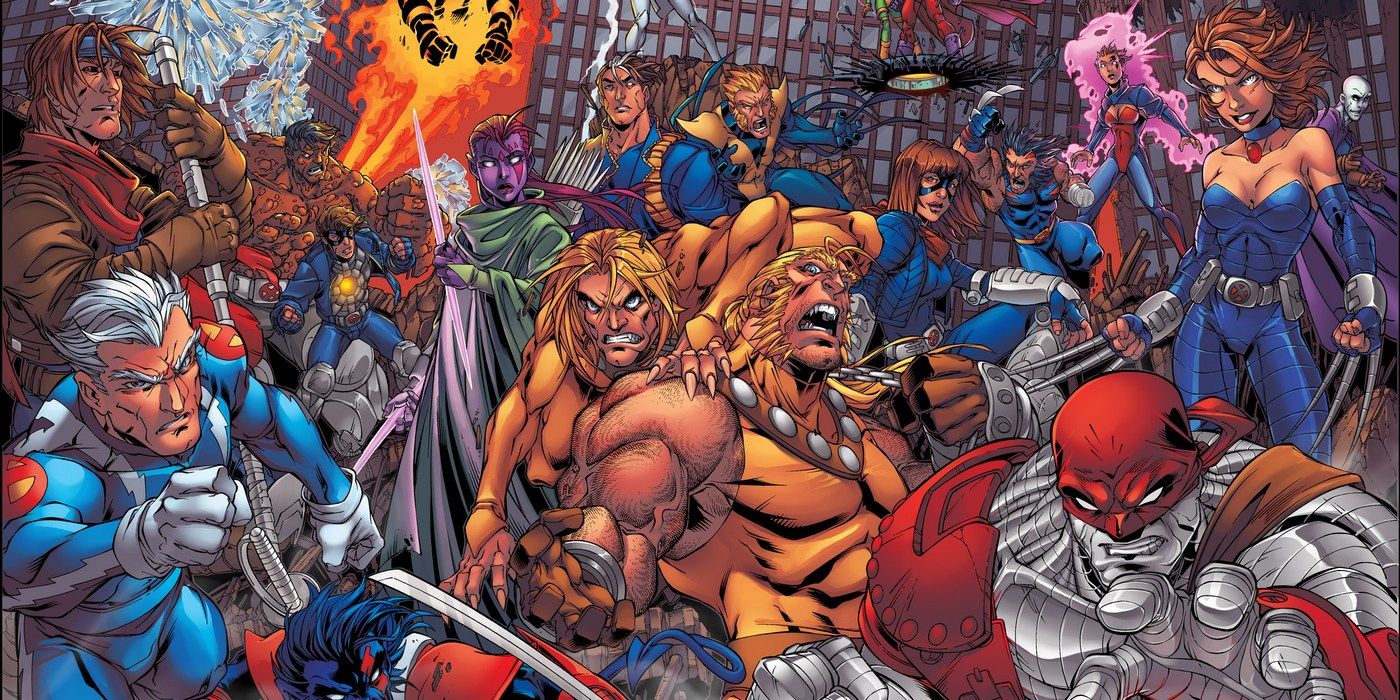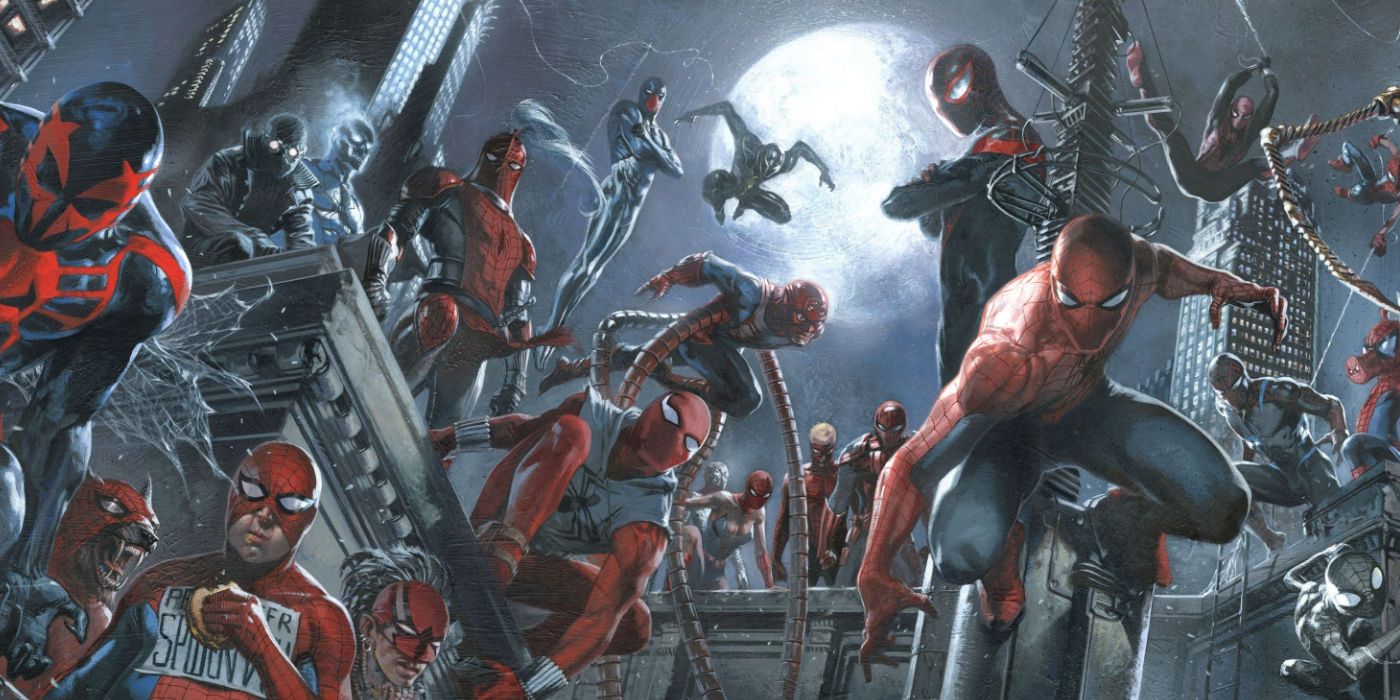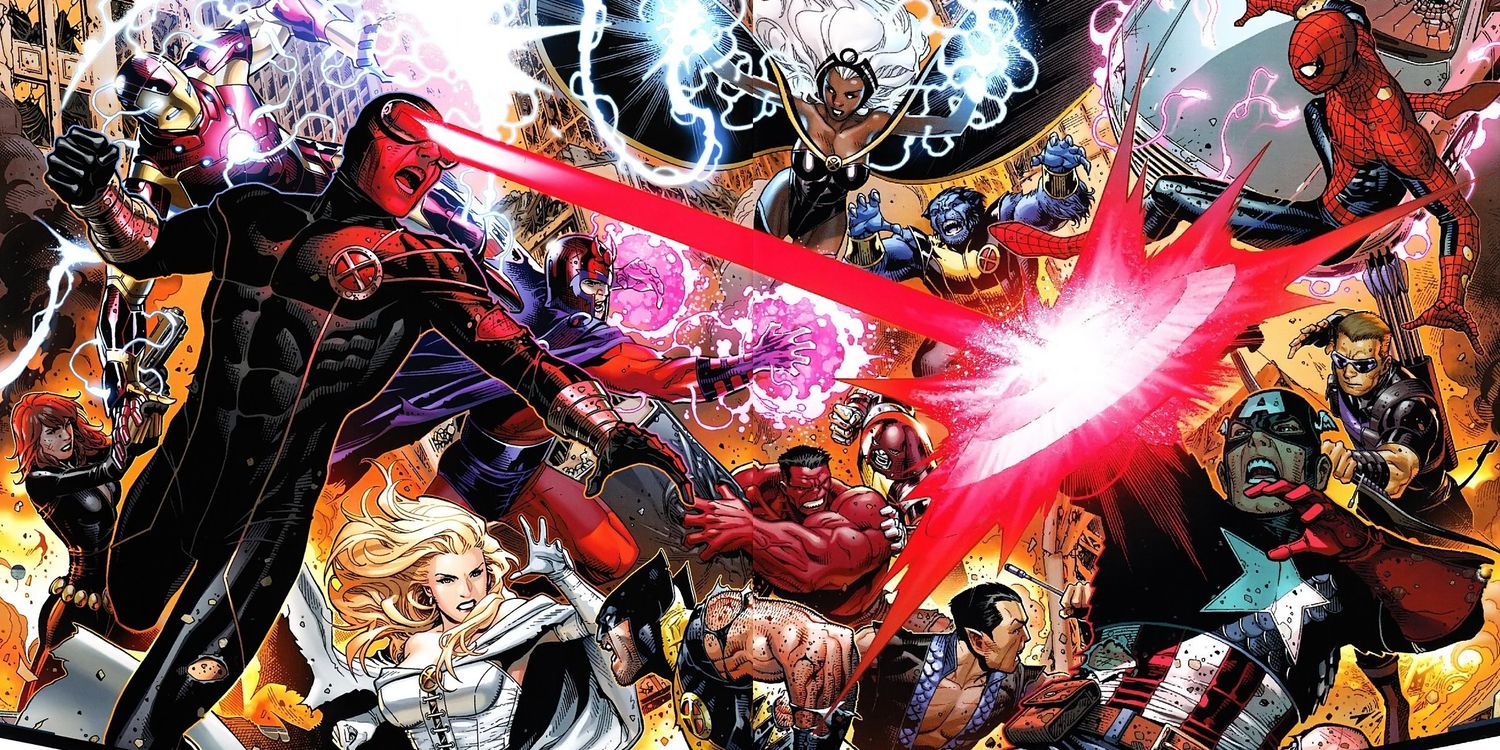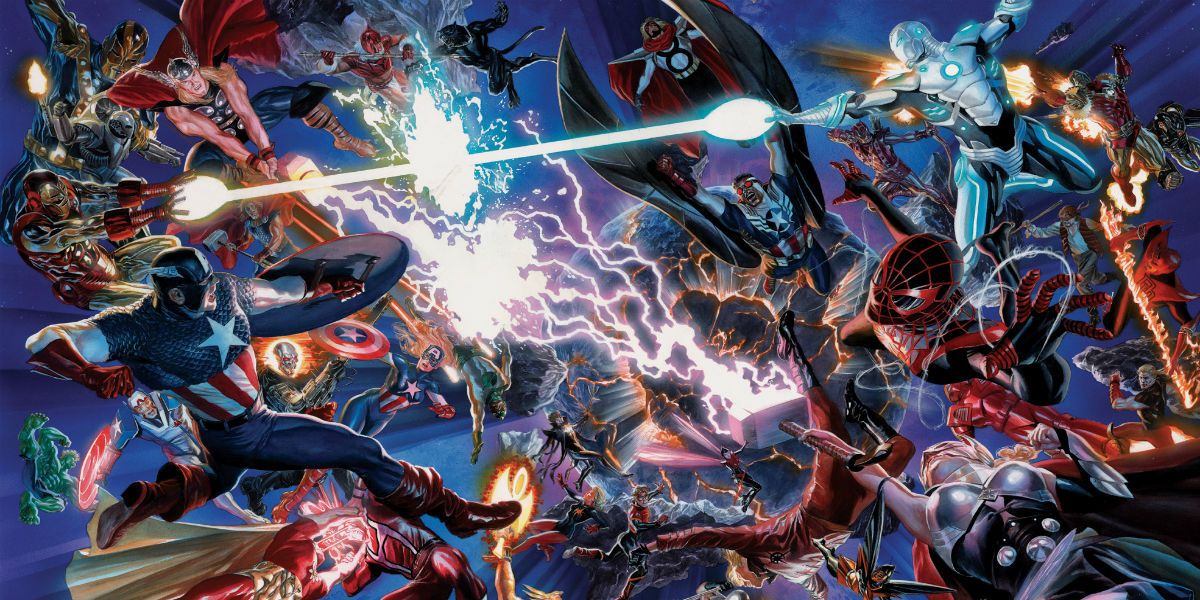The multiverse is one of the defining aspects of modern superhero universe, especially in the comic book world. The concept of multiple planes of existence isn’t a recent development by any means, but comics were one of the first mediums to successfully chart parallel universes in the name of entertainment - something Marvel now looks to translate into movie format. The studio's use of alternate and parallel realms will continue to impact their storytelling process in print and on the screen, as well as influencing other aspects of the Omniverse (which contains all fictional work).
As Doctor Strange brings his magical bag (and perhaps an Infinity Stone) to the Marvel Cinematic Universe, parallel dimensions and alternate universes will take front and center on the big screen. The use of magics both real and practical will expand the shared universe inwards and outwards in ways casual audiences can only begin to imagine. But where did Marvel's multiverse come from, and what will it mean to Marvel’s pantheon of heroes?
What’s the Deal with the Multiverse?
Although the modern fictional usage of the term was coined by author Michael Moorcock, the earliest comic book concept came in the form of DC’s Wonder Woman #59 (1953), in which the eponymous heroine discovers a parallel universe. Historically, though, comic fanatics naturally flash back to Barry Allen’s trip to Earth-Two in 1961’s The Flash #123, which lead to Justice League of America’s 1963 classic, "Crisis on Earth-One," and so on.
Marvel themselves were no slouches when it came to alternate worlds. However, they didn’t really organize their realms as early as DC did. If there's anyone is responsible for their Multiverse as we know it now, it’s artists Jack Kirby and Steve Ditko. Marvel Head Kevin Feige, when speaking with Screen Rant about Doctor Strange, explained Ditko’s influence on the film and the comic book universes:
“I would say that Steve Ditko and the art of Steve Ditko is a huge inspiration for us…a lot of our interpretation of the multiverse and various dimensions come right out of all of the art of those early comics that Mr. Ditko did.”
While Kirby and Lee created some incredible works of their own and in concert, it was Ditko’s sorcerer creation that laid the groundwork for boundary-breaking realities. It was also his increasingly psychedelic artwork that helped push Lee to create the Marvel Method (their visually-oriented, practically-minded house style) and realize their characters as aspects of a multifaceted world. As revolutionary as Ditko's style was, Marvel wouldn’t get organized about their alternate realities until the late 70s.
The Multiverse Takes Form
The first time fans really got a taste of parallel dimensions which didn’t have devils, demons, and all the other adversarial accoutrements of Strange-land was in Marvel’s first installment of What If? in 1977. The Watcher opens this series by setting up the MU as “worlds within worlds, separated only by the thinnest web of cosmic gossamer.” The series explored the possibilities of parallel worlds where different versions of popular character’s lives played out.
Not only was the series extremely popular, but it finally set some ground rules for the Marvel Universe. These rules were further fomented in the 1979 book Marvel Two-in-One #50. Here, it was revealed that time travel could alter the past, but merely by creating an alternate history (shades of “Age of Apocalypse” or "Days of Future Past," for instance). It wasn’t until Alan Moore’s run on The Daredevils in 1983 that Prime Earth got its designation of 616.
The mid-80s also saw then-Marvel assistant editor Marc Gruenwald and editor Jim Shooter pave the way for Marvel’s modern multiverse. Gruenwald devised one of the earliest crossover events, the Contest of Champions (1982). Their work on Champions eventually lead Shooter to create a book which attempted to detail everything in the House of Ideas’ superhero pantheon. Gruenwald recruited several dedicated writers and artists and wrote the book on Marvel – literally. The Official Handbook of the Marvel Universe and its updated volumes tried their hardest to detail as much info on the main MU, as well as growing number of alternate realities.
Setting the Prime Reality: Earth-616
When Marvel began expanding their titles in the early 60s, they needed a way to keep everyone under the same umbrella. As a result, the Marvel Universe became a place where space-farers like The Fantastic Four could intermingle with Spider-Man, the X-Men, and the Avengers. Every single character that existed inside the same continuity or timeline also dwelled within the auspices of Earth-616.
Depending upon which piece of apocrypha you believe, Earth-616 was either denoted 616 based on Alan Moore’s concept of a massive multiverse, or because previous Captain Britain scribe Dave Thorpe didn’t care for superhero comics (616 supposedly being the true biblical number of the beast). Either way, the naming process lent both an air of grandiosity and insignificance to the Marvel multiverse – since so many other realms existed beyond it. The designation is now what Marvel calls an ‘Official Reality Number,’ or a way to demarcate the rapidly expanding parallel realms.
Earth-616 exists in a relatively synchronous orbit to our own reality, meaning 616’s history books mention the Emancipation Proclamation of 1863. Many current events like 9/11 have an impact on the denizens of this timeline as they do in real life. Yet this variation of Earth includes happenings like the Superhero Registration Act which aren't concurrent with our realm. Prime Earth also includes fictional countries like Wakanda, Genosha, and Latveria, and is rife with superhuman and mutated heroes.
Major Alternate/Parallel Universes – a Brief Primer
Digging into Marvel’s many probable realities doesn’t require covering each and every little random line or imprint the company's had over the years. In this case, parallel or alternate worlds that might be relevant to the Marvel Universe will make the cut. Some of the more obscure and less-relevant realms, especially as regards the Marvel Cinematic Universe, won’t make the cut. For instance, the generally light-hearted vibe of the MCU and MU means Clive Barker’s defunct horror imprint Razorline (Earth-45828) won’t likely play a role in any film or mainstream comic book. The same goes for the absorbed Malibu line/Ultraverse (Earth-93060) and the anthropomorphic Larval Universe (Earth-8311) – unless Spider-Ham plays a role in Avengers: Infinity War part 5.
In any case, these imprints and spinoffs could have some further bearing on the future of Marvel:
Earth-1610 – Ultimate Marvel:
- This universe kicked off with Ultimate Spider-Man #1 in 2000. It traditionally existed outside the realm of Earth-616, until the events of “Secret Wars” (2015), which plucked the best bits of Ultimate Marvel from the 1610 timeline before starting fresh in Marvel NOW!
Earth-199999 – The Marvel Cinematic Universe:
- Home to Captain America, The Avengers, Ant-Man, and the Guardians of the Galaxy among others, Earth-199999 split from the multiverse after Iron Man hit the screen in 2008.
Earth-92131 – Marvel Animated:
- Not to be confused with Earth-90210 (a terrifyingly melodramatic place), the cartoon elements of Marvel’s stable live in this realm. This universe began with the X-Men animated series episode “Night of the Sentinels” in 1992.
Earth-928 – Marvel 2099:
- Starting with Spider-Man 2099 #1 (Marvel sure likes to swing into things) in 1992, Marvel 2099 explored what its heroes and villains would look like in the future. Although initially separate, it was revealed that Earth-928 was actually Earth-616 in the future (a huge shocker).
Earth-982 – MC2:
- Since the release of their 1998 parallel worlds series, What If? vol. 2 #105, most of its entrants fall within this 1990s-emulating realm. Spider-Girl, Wild Thing, and the Fantastic Five all originated here.
Earth-2149 – Marvel Zombies:
- The Ultimate Fantastic Four #21 (2005) explored what would happen if a major incursion of “zombie fever” bit the writing staff at Marvel. Many heroes became zombies, and a heck of a lot of on the page death (and fun) followed in its wake.
Earth-712 – Squadron Surpreme:
- This parallel plane holds Marvel’s Justice League parody/homage, the Squadron Supreme. Since The Avengers #85-86 (in 1971) their universes have changed a little bit from time to time. However, DC pastiche usually operates outside the auspices of Earth-616's timeline.
Earth-148611/Earth-555 – New Universe:
- Marvel Editor Jim Shooter put this realm together in honor of Marvel Comic’s 25th anniversary. A more realistic world, modeled after our own, the New Universe was also temporarily rebooted on its own 20th anniversary, in 2006, as Earth-555.
Alternate Dimensions, External Realities, and Pocket Realms
As with parallel universes, the list of alternate Marvel dimensions and realms is quite extensive. However, there are several important planes of existence which may figure into the Sorcerer Supreme’s first outing as well as the MCU in future. Of those, fans already know all about Asgard (home of Thor). They’ll definitely get a good glimpse of the Astral realm as the Ancient One shows Doctor Strange the ropes. Fans will be seeing a good deal of the Dark Dimension – seeing as Strange’s film nemesis Kaecilius will be in contact with it – and likely its master, the dread lord Dormammu.
Rumors that a Many-Angled One might take the fight to the Marauder in Guardians of the Galaxy Vol. 2 are suggestive of the Cancerverse – a realm in which death no longer exists and a reverse team of Avengers, known as the Revengers, hold dominion. If Marvel and FOX could ever come to some sort of arrangement, the Negative Zone would be a great place to wage a major MCU battle, especially since it plays heavily in several space-related crossovers.
Since the X-Men and Fantastic Four won’t be participating in the near future, anyway, pocket dimensions like the Void inside Shaman’s medicine bag, the Otherplace (a phony Limbo), and Counter-Earth (a pocket realm from "Heroes Reborn") are likely out. The time-island Panoptichron from the Exiles series is also a no-go. Since Captain Britain hasn’t been introduced either, Avalon (where his Britain Corps access the multiverse) probably won’t play a role.
One prominent pocket universe that will definitely show up at some point in the not-too-distant future is the Soul Stone. The stone has a nasty tendency of absorbing, unsurprisingly, souls, and trap people inside its Soul World. As Mad Titan (or purple chair guy) Thanos rounds up his glove-fillers, the glowing orange or green stone (depending upon whether they give it to Doctor Strange or another unsuspecting hero) is already hiding in plain sight.
Why Alternate Universes Are Vital to Marvel
Every time a new superhero is created, their birth impacts overall continuity. Every time an adventure takes place meddling with time and/or space, it could have ramifications on Marvel’s Prime Earth. Creating multiple dimensions and universes allow the company to expand the possibilities for storytelling and create realms where new or alternate versions of characters can exist outside their traditional timeline. For instance, when writers at Marvel wanted to explore the idea of an X-Men baddie winning the day in “Age of Apocalypse.” Rather than mucking up Earth-616, the creative staff sent Charles Xavier’s son Legion back in time. His schizophrenic yet incredibly powerful mind created an alternative timeline which was later retconned into Earth-295.
The multiverse is also the reason Peter Parker’s Spider-Man (Earth-616) and Miles Morales’ Ultimate Spider-Man (Earth-1610) can hang together (more on the ‘how’ in a moment), or Old Man Logan (Earth-807128) and Laura Kinney (Earth-616) can trade ‘snickts’ with one another in the pages of All-New Wolverine.
Different parallel planes also gives writers free-reign to create trans-dimensional events, such as the 2014 Spider-Verse event – which brought together every known Spider-person (aside from those peskily-copyrighted Sony ones) to defeat universe-hopping villain Morlun or the world-rending "House of M." Were Marvel’s Cinematic Universe to further adapt alternate realities, well, the possibilities would be legitimately endless.
Of course, the bridge between Marvel Universes will need protectors, mystics like Merlyn, the Captain Britain Corps, Doctor Voodoo, and Doctor Strange. Even though the Strange One won’t be leaping through too many parallel universes yet, Kevin Feige says the MCU is still developing its own multiverse with the Sorcerer Supreme’s aid, one which will give Earth-199999 a great deal of possibilities in future:
“We’re playing as much with the notion of the multiverse as much as alien dimensions, for lack of a better term, than parallel realities where there’s Strange that wears Iron Man armor – we’re not there yet.”
How the Multiverse Could Change the MCU
Much like the at-times perplexing Earth-hopping Arrowverse, Doctor Strange brings a multifaceted element to Marvel’s Cinematic Universe. No longer constrained by Earth's boring old three dimensions, Strange can, in future, hop our heroes in and out of universes as fast as you can say “by the hoary hosts of Hoggoth.” But why is the Marvel Multiverse necessary for the already successful and in-depth Marvel Cinematic Universe? As Feige explained:
“We wanted to do something different, and we wanted to tap into this notion of the multiverse, of dimensions right next to our own. And if you were able to tap into those dimensions, and those other powers, and what could you do if you pulled aspects of those other dimensions into our realm.”
Removing limitations on where and when heroes can travel opens the door for scores of exciting new possibilities. Not only would popular characters from other universes, such as the Ultimates, Miles Morales, and Black Widow or members of the What If? realm, be able to enter into the MCU, but it also allows for new adversaries inter-dimensional entities like Dormammu or Annihilus. It also gives Deadpool and the X-Men an in, if necessary.
Were Marvel and FOX to solidify a deal, much like the Spider-share with Sony, an alternative dimension would explain everything away. It would allow the X-Men to conveniently exist outside Earth-199999 – on an alternate world perhaps labeled as Earth-FOX01 or some such thing. Post-arrangement, Deadpool et. al. could simply whoops their way through a wormhole or be pulled into a pocket universe which just so happens to have another opening et voila! Continuity solved.
On a purely practical level, Marvel’s Multiverse also offers a ‘way out’ for Marvel once their big multiphasic heroes like Captain America and Iron Man’s stars grow too old for their desired parts, move on, or choose not to renew their contracts. The House of Ideas can always hit the reset button at any point with a world-ender from the pages of the comic books.
Tying up Loose Ends?
Staging something along the lines of the 2015 mega-event “Secret Wars” would be like pushing the history-eraser button. Suppose Marvel tired of their current formula and wanted to start from scratch – poof! – fresh slate. The real trick, though, is how to rebuild in the aftermath. Or, instead of cutting the cord completely on all of their established lore, the MCU could simply change things up a little.
One overblown space battle, one wandering Celestial, one rogue Watcher has the power to shift everything and everyone in the MCU into an alternate reality. Marvel could even use one of their mystical types, such as Doctor Strange, Brother Voodoo, or Scarlet Witch to shift the superhero teams from Earth-199999 to another realm where X-Men frolic and Groots of all sizes crush their enemies.
Clearly, Kevin Feige is well aware of the power of this unique storytelling tool. If he and his colleagues so desired, they could potentially shake things up in a major way every decade or so. The beauty of the multiverse rests in its potential to make things fresh within the House of Ideas’ comic and cinematic dominions without scrapping all the marvelous films and ideas which came before it.
Doctor Strange opens November 4, 2016; Guardians of the Galaxy Vol. 2 – May 5, 2017; Spider-Man: Homecoming – July 7, 2017; Thor: Ragnarok – November 3, 2017; Black Panther – February 16, 2018; Avengers: Infinity – May 4, 2018; Ant-Man and the Wasp – July 6, 2018; Captain Marvel– March 8, 2019; Untitled Avengers – May 3, 2019; and as-yet-untitled Marvel movies on July 12, 2019, and on May 1, July 10, and November 6 in 2020.

